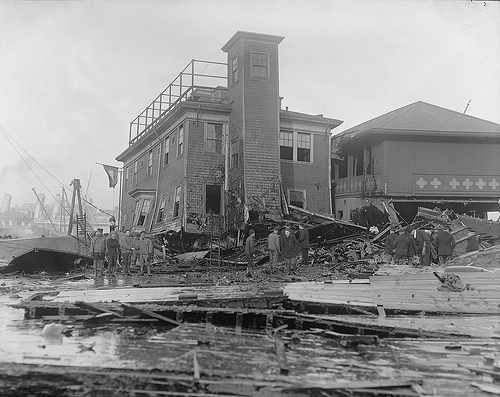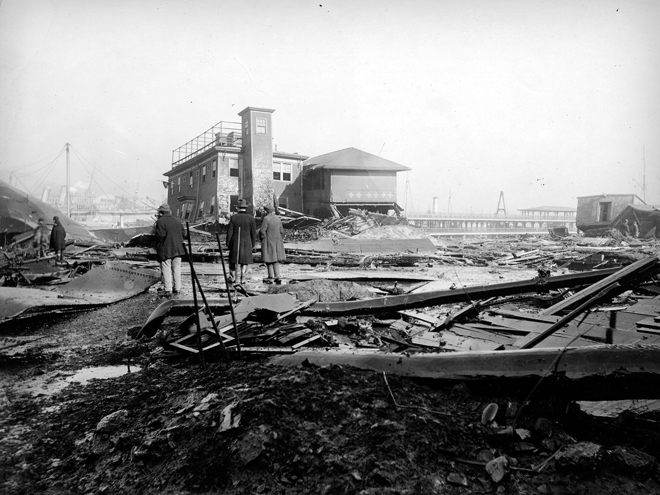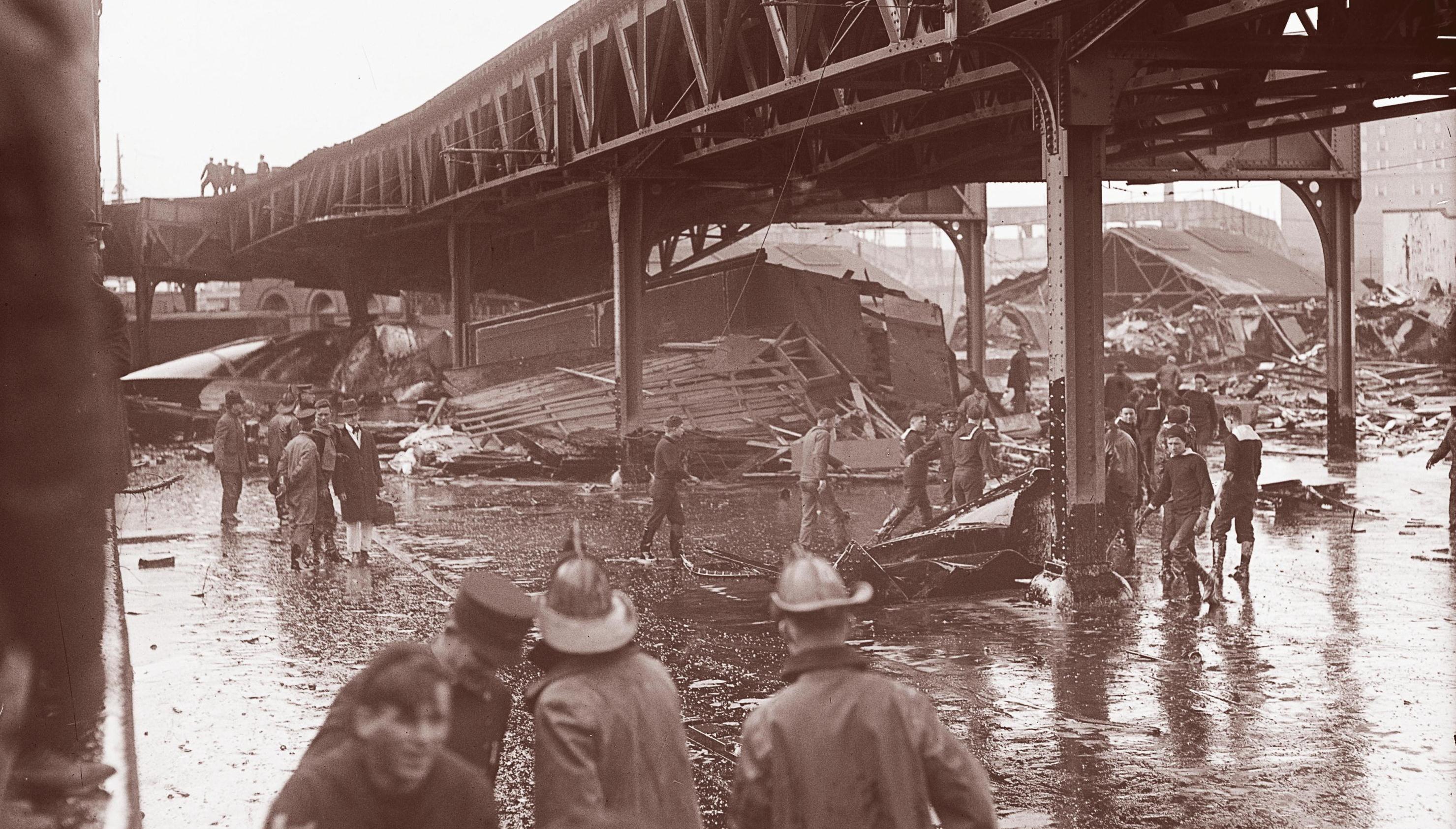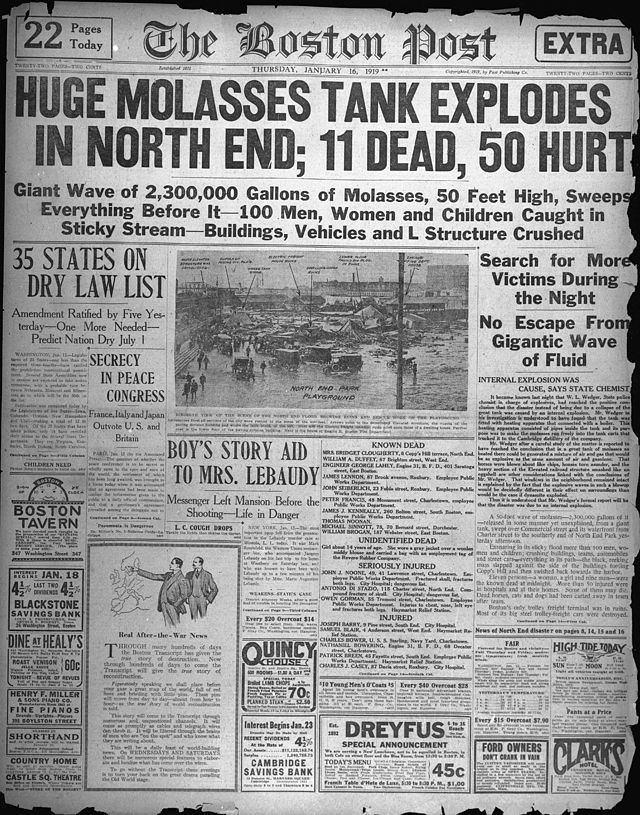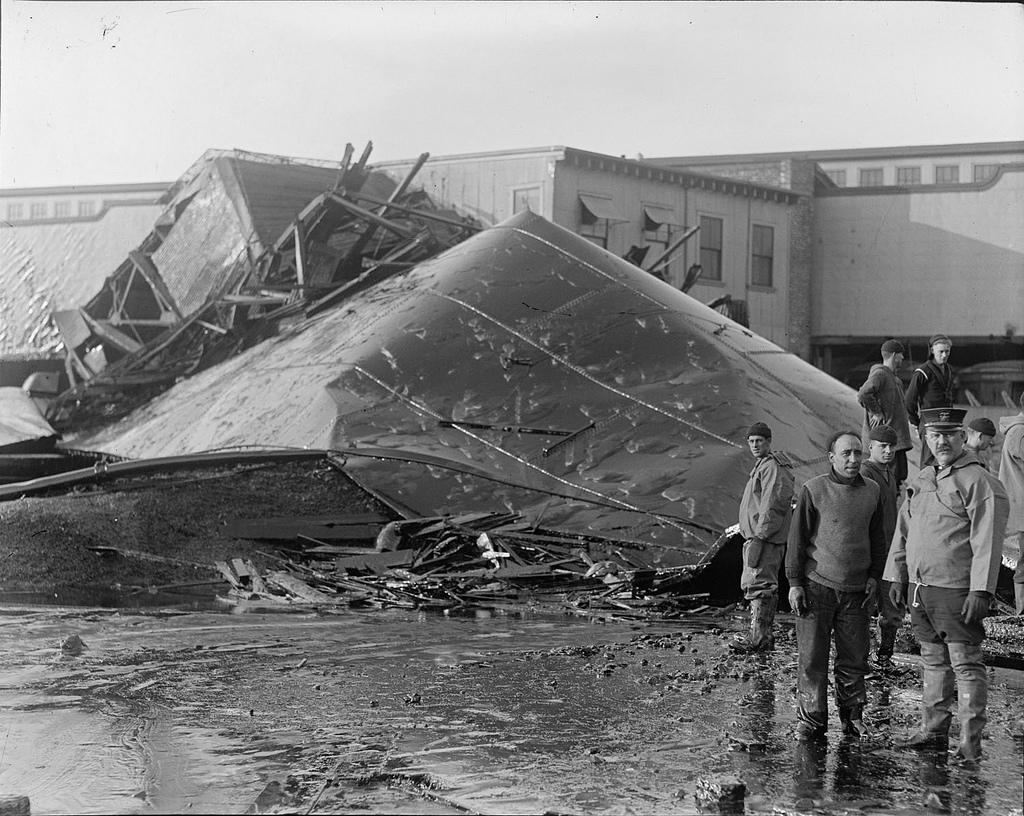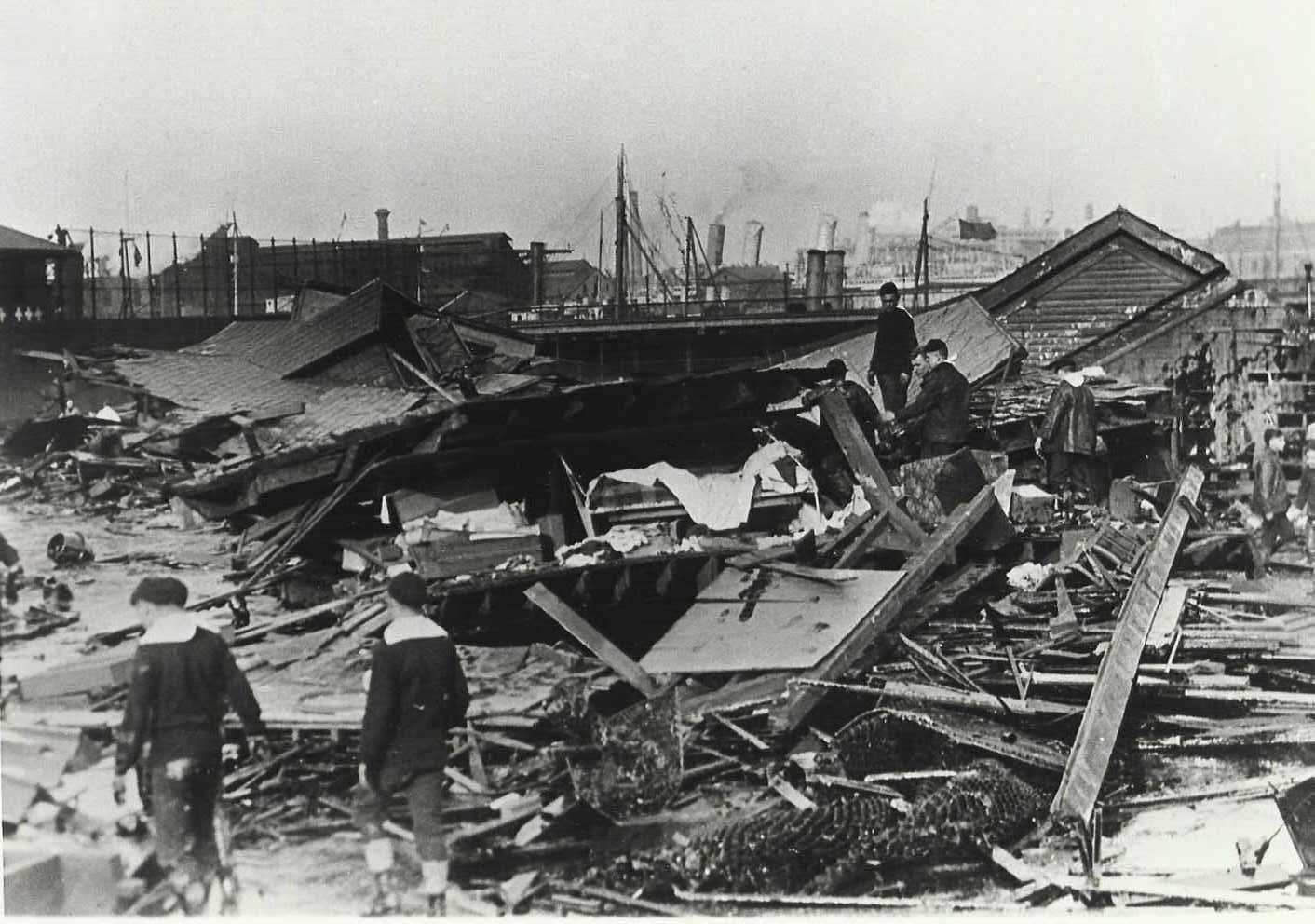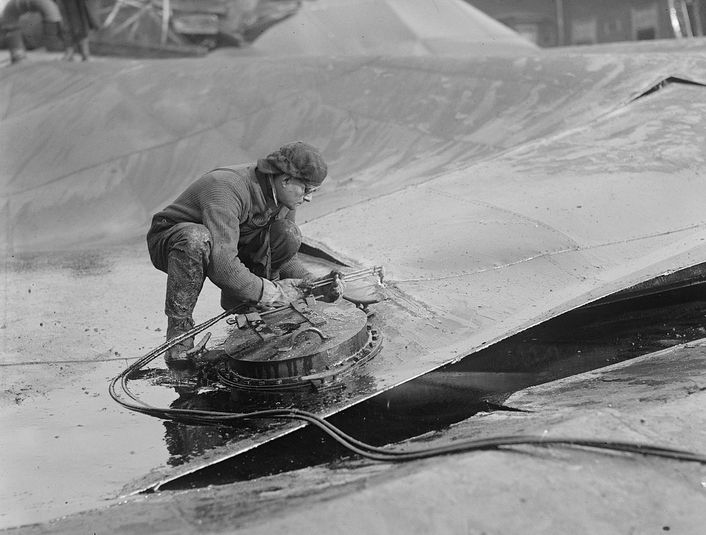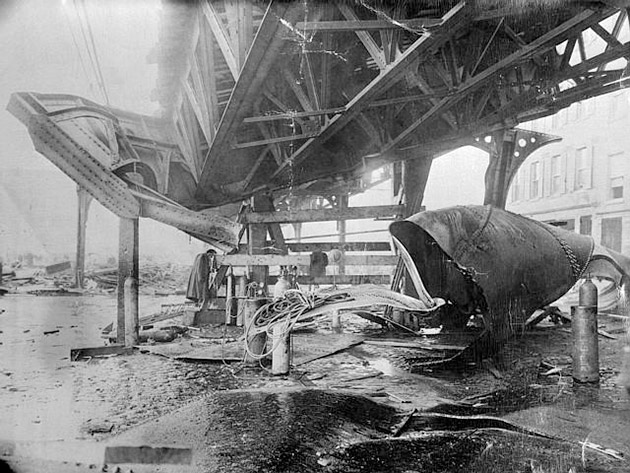The Boston Molasses Disaster
As a youth, my mother often referred to me as being “slower than molasses in winter”. That jibe has stuck in my throat all these long, long years and finally I bring you evidence that molasses is not necessarily slow, and that even in winter it can be lethally quick off the mark.
The Boston molasses disaster happened on January 15th, 1919 and despite the humorous name it was no laughing matter at all. Boston, Massachusetts was left reeling with 21 dead and 150+ injured. Suddenly molasses wasn’t the sluggish friend everyone had thought.
Molasses was the sweetener of choice at the time and also a constituent of booze and munition, so it was important stuff. A large vat of molasses was sitting outside awaiting transport to the Purity plant. The innocent looking tank, 50 ft (15 m) tall, 90 ft (27 m) in diameter and containing as much as 2,300,000 US gal, wasn’t as innocent as it appeared. The huge vat of sugary stickiness decided to collapse without warning. RUN!
The collapse of the tank produced a wave of molasses that reached 25 feet (7.6 m) at its highest point and traveled at an estimated 35 mph. A train was derailed, one lorry was thrown into the harbour, buildings were forced off of their foundations and carried away and any humans in its path were destroyed. Several blocks were flooded up to 2 or 3 feet deep in the black goop.
The Boston Post reported:
Molasses, waist deep, covered the street and swirled and bubbled about the wreckage … Here and there struggled a form—whether it was animal or human being was impossible to tell. Only an upheaval, a thrashing about in the sticky mass, showed where any life was … Horses died like so many flies on sticky fly-paper. The more they struggled, the deeper in the mess they were ensnared. Human beings—men and women—suffered likewise.
An article in the Smithsonian from 1983 records an eye-witness testimony:
… Anthony di Stasio, walking homeward with his sisters from the Michelangelo School, was picked up by the wave and carried, tumbling on its crest, almost as though he were surfing. Then he grounded and the molasses rolled him like a pebble as the wave diminished. He heard his mother call his name and couldn’t answer, his throat was so clogged with the smothering goo. He passed out, then opened his eyes to find three of his four sisters staring at him.
First on the scene were 116 cadets under the direction of Lieutenant Commander H. J. Copeland from USS Nantucket that was docked nearby at the playground pier. They helped people stuck in the mire and kept away others who’d just shown up to ogle at the state of things.
Soon the Boston Police, Red Cross, Nurses, Army and other Navy personnel arrived. They worked through the night and makeshift hospitals were erected near the disaster site to care for the victims.
The search for bodies went on for four days; moving through the treacle was arduous work, and even once a body had been found amongst the sugary murk it was often difficult to make an accurate identification.
The good people of Boston sued the company responsible for the deadly barrel of molasses and after three years of legal wrangling the people eventually won.
United States Industrial Alcohol Company ultimately paid out $600,000 in out-of-court settlements (at least $10.7 million in 2012 dollars). Families of the fatal victims received approximately $7,000 per victim (approximately $125,000 in 2012 dollars).
The clean up of the immediate area of the accident took 300 people a number of weeks. They washed the site with salt water and put down sand in an attempt to mop it up, the water in the harbour was brown until the summer months came.
The wider Boston area took much longer to clean, “everything a Bostonian touched was sticky”, the molasses found itself on train seats, platforms, phone booths, everywhere. For decades afterwards Bostonians swore blind that you could still smell molasses on a hot day.
So what happened to bring about this sinister sticky tsunami? It seems that the barrel hadn’t been checked sufficiently for strength and already had a few leaks. The barrel was a few years old and perhaps past its best. On top of that, the temperature in Boston had swiftly moved from 2 to 41 °F (−17 to 5.0 °C) which might have added to the strain. The carbon dioxide produced in fermentation probably added additional pressures within.
So, molasses is generally a slow substance, especially in the winter time. But if molasses decides it wants to pick up a bit of speed, you’d better get out of its way in a hurry. Fast molasses takes no prisoners.

